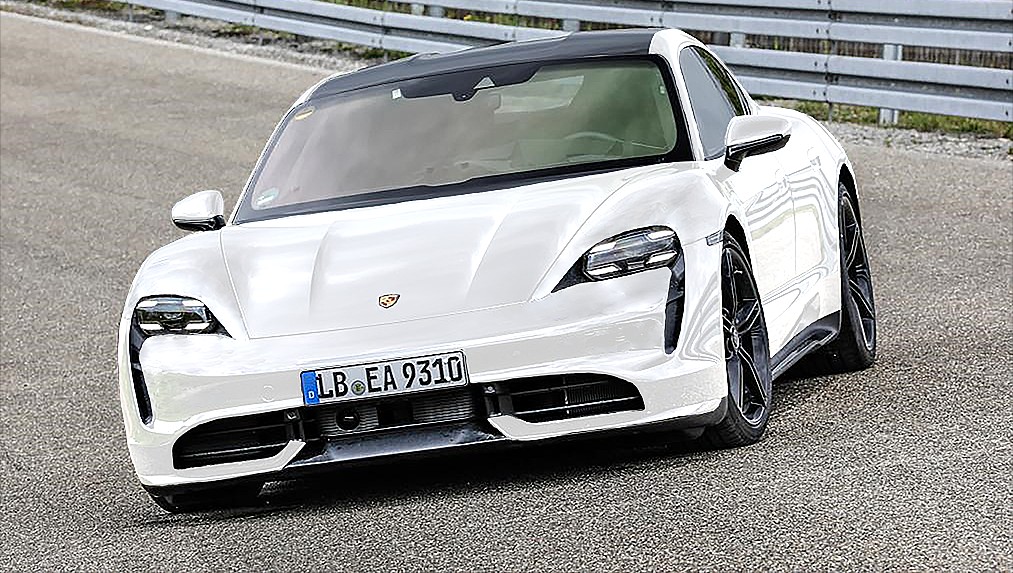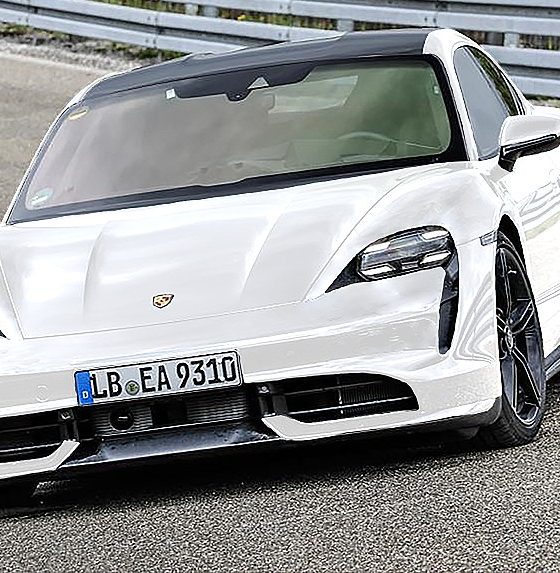

News
Porsche announces Taycan insurance to make US owners’ transition to EVs easier
Porsche appears set on making its customer’s transition to electric vehicles as painless as possible, with the German carmaker recently announcing that it will be offering an insurance service for the Taycan. With its own insurance program in place, Porsche Taycan buyers would avoid encountering inconveniences such as surprisingly steep premiums simply because they are driving an all-electric car.
While electric vehicles are generally cheaper to maintain, and despite the cars themselves having fewer wearable components as their gas-powered counterparts, some insurance providers have proven to be quite inexperienced when it comes to insuring EVs. Back in 2017, for example, the AAA raised the rates of Tesla Model S and Model X by 30% despite the premium sedan and the SUV’s excellent safety ratings.
The German automaker’s insurance program for the Taycan will be administered in partnership with Mile Auto and Porsche Financial Services. What is particularly compelling about the service is that it does not involve the collection of data such as the vehicle’s location, or when and how the car is driven. Instead, the program will simply require owners to submit a photo of their Taycan’s odometer at regular intervals. A Porsche Financial Services spokesperson has confirmed this in a statement to Green Car Reports. “No other information is collected from the vehicle or customer,” the spokesperson said.
Interestingly, the German automaker added that while the timing of its insurance program is perfect for the release of the Taycan this coming September, the development of the program had actually been completed independent of the electric vehicle’s launch. The carmaker added that while the insurance service would cover the Taycan, the program will also extend to every Porsche model going back to 1981.
For now, Porsche owners would need to be in Oregon and Illinois to take advantage of the Taycan’s insurance program, though the carmaker has stated that it is looking to roll out the service to a third state by the end of 2019. A rollout to other US areas is currently under evaluation.
Elon Musk has mentioned that Tesla will be releasing its own, compelling insurance program for its vehicles. The CEO gave a one-month timeline for the service’s release during the first-quarter earnings call, though Musk later noted during the annual shareholder meeting that Tesla Insurance is coming soon after a “small acquisition” is completed, and after software is written for the service.
The Porsche Taycan is expected to be released this coming September. The German automaker has kept details of the vehicle’s production version secret, though reports have emerged stating that the base Taycan will be Rear Wheel Drive only, and it will be equipped with an 80 kWh battery pack and a choice of 240-kW (322-hp) and 280-kW (375-hp) motors. On the other hand, the vehicle’s mid-range variant, the Taycan 4S, will reportedly be equipped with a 96 kW battery pack and 320-kW (429-hp) or 360-kW (483-hp) electric motors. The top-tier version, the Taycan Turbo, will feature a 96 kWh battery, a 160-kW (215-hp)/221-lb-ft motor up front, and a 300-kW (402-hp)/405-lb-ft motor at the rear.

News
Tesla FSD fleet is nearing 7 billion total miles, including 2.5 billion city miles
As can be seen on Tesla’s official FSD webpage, vehicles equipped with the system have now navigated over 6.99 billion miles.

Tesla’s Full Self-Driving (Supervised) fleet is closing in on almost 7 billion total miles driven, as per data posted by the company on its official FSD webpage.
These figures hint at the massive scale of data fueling Tesla’s rapid FSD improvements, which have been quite notable as of late.
FSD mileage milestones
As can be seen on Tesla’s official FSD webpage, vehicles equipped with the system have now navigated over 6.99 billion miles. Tesla owner and avid FSD tester Whole Mars Catalog also shared a screenshot indicating that from the nearly 7 billion miles traveled by the FSD fleet, more than 2.5 billion miles were driven inside cities.
City miles are particularly valuable for complex urban scenarios like unprotected turns, pedestrian interactions, and traffic lights. This is also the difference-maker for FSD, as only complex solutions, such as Waymo’s self-driving taxis, operate similarly on inner-city streets. And even then, incidents such as the San Francisco blackouts have proven challenging for sensor-rich vehicles like Waymos.
Tesla’s data edge
Tesla has a number of advantages in the autonomous vehicle sector, one of which is the size of its fleet and the number of vehicles training FSD on real-world roads. Tesla’s nearly 7 billion FSD miles then allow the company to roll out updates that make its vehicles behave like they are being driven by experienced drivers, even if they are operating on their own.
So notable are Tesla’s improvements to FSD that NVIDIA Director of Robotics Jim Fan, after experiencing FSD v14, noted that the system is the first AI that passes what he described as a “Physical Turing Test.”
“Despite knowing exactly how robot learning works, I still find it magical watching the steering wheel turn by itself. First it feels surreal, next it becomes routine. Then, like the smartphone, taking it away actively hurts. This is how humanity gets rewired and glued to god-like technologies,” Fan wrote in a post on X.
News
Tesla starts showing how FSD will change lives in Europe
Local officials tested the system on narrow country roads and were impressed by FSD’s smooth, human-like driving, with some calling the service a game-changer for everyday life in areas that are far from urban centers.

Tesla has launched Europe’s first public shuttle service using Full Self-Driving (Supervised) in the rural Eifelkreis Bitburg-Prüm region of Germany, demonstrating how the technology can restore independence and mobility for people who struggle with limited transport options.
Local officials tested the system on narrow country roads and were impressed by FSD’s smooth, human-like driving, with some calling the service a game-changer for everyday life in areas that are far from urban centers.
Officials see real impact on rural residents
Arzfeld Mayor Johannes Kuhl and District Administrator Andreas Kruppert personally tested the Tesla shuttle service. This allowed them to see just how well FSD navigated winding lanes and rural roads confidently. Kruppert said, “Autonomous driving sounds like science fiction to many, but we simply see here that it works totally well in rural regions too.” Kuhl, for his part, also noted that FSD “feels like a very experienced driver.”
The pilot complements the area’s “Citizen Bus” program, which provides on-demand rides for elderly residents who can no longer drive themselves. Tesla Europe shared a video of a demonstration of the service, highlighting how FSD gives people their freedom back, even in places where public transport is not as prevalent.
What the Ministry for Economic Affairs and Transport says
Rhineland-Palatinate’s Minister Daniela Schmitt supported the project, praising the collaboration that made this “first of its kind in Europe” possible. As per the ministry, the rural rollout for the service shows FSD’s potential beyond major cities, and it delivers tangible benefits like grocery runs, doctor visits, and social connections for isolated residents.
“Reliable and flexible mobility is especially vital in rural areas. With the launch of a shuttle service using self-driving vehicles (FSD supervised) by Tesla in the Eifelkreis Bitburg-Prüm, an innovative pilot project is now getting underway that complements local community bus services. It is the first project of its kind in Europe.
“The result is a real gain for rural mobility: greater accessibility, more flexibility and tangible benefits for everyday life. A strong signal for innovation, cooperation and future-oriented mobility beyond urban centers,” the ministry wrote in a LinkedIn post.
News
Tesla China quietly posts Robotaxi-related job listing
Tesla China is currently seeking a Low Voltage Electrical Engineer to work on circuit board design for the company’s autonomous vehicles.

Tesla has posted a new job listing in Shanghai explicitly tied to its Robotaxi program, fueling speculation that the company is preparing to launch its dedicated autonomous ride-hailing service in China.
As noted in the listing, Tesla China is currently seeking a Low Voltage Electrical Engineer to work on circuit board design for the company’s autonomous vehicles.
Robotaxi-specific role
The listing, which was shared on social media platform X by industry watcher @tslaming, suggested that Tesla China is looking to fill the role urgently. The job listing itself specifically mentions that the person hired for the role will be working on the Low Voltage Hardware team, which would design the circuit boards that would serve as the nervous system of the Robotaxi.
Key tasks for the role, as indicated in the job listing, include collaboration with PCB layout, firmware, mechanical, program management, and validation teams, among other responsibilities. The role is based in Shanghai.
China Robotaxi launch
China represents a massive potential market for robotaxis, with its dense urban centers and supportive policies in select cities. Tesla has limited permission to roll out FSD in the country, though despite this, its vehicles have been hailed as among the best in the market when it comes to autonomous features. So far, at least, it appears that China supports Tesla’s FSD and Robotaxi rollout.
This was hinted at in November, when Tesla brought the Cybercab to the 8th China International Import Expo (CIIE) in Shanghai, marking the first time that the autonomous two-seater was brought to the Asia-Pacific region. The vehicle, despite not having a release date in China, received a significant amount of interest among the event’s attendees.








